Garment Printing Types [Best Guide in 2025]
Have you ever wondered how that eye-catching design ended up on your favorite t-shirt? Well, the magic behind it is garment printing! This process transforms plain fabrics into vibrant canvases, a piece of self-expression, branding, and artistic creations.
Since the Christmas season is coming, consider starting a garments or DTF printing business. These garments could be shirts, hoodies, sweaters, hats, or a combo of customized prints on fabrics.
But with so many printing techniques available, choosing the right one can take time and effort. All types of garments yield print results based on the quality and durability of the fabric.
Fear not, fashion enthusiasts! This blog will be your one-stop guide to the most popular garment printing types with their pros and cons, and the unique characteristics that make each one distinct.
Table of Contents
Most Common Garment Printing Types
Clothes aren’t just about covering up anymore. They’re walking billboards for your unique style. But how do those eye-popping graphics and witty slogans end up on your favorite tee? Here the garment printing comes on stage to take your garments from drab to fab!
In the garment industry, there are zillion ways to create custom fabric prints. It could be overwhelming to choose one from millions. At the same time, it’s crucial to satisfy customers with the final product.
By understanding each method’s uniqueness and pros and cons, you can make a better decision for your printing line. Let’s take a closer look at common garment printing types:
Screen Printing
The king of t-shirt printing is screen printing. It also known as silk printing is the most traditional way of garment printing. A screen printer machine involves creating a stencil (or screen) for each color in the design and then using a squeegee to push ink through the stencil onto the fabric.
It’s the perfect printing technique for large production orders, offering vibrant colors and a thick, durable print.
Screen printing allows for specialty effects like metallic or glow-in-the-dark inks. Here’s a look at its advantages and disadvantages:
Pros
- Cost-effective for bulk orders
- Exceptional durability and color vibrancy
- Vibrant and soft to touch feel
- Speedy printing process for large amounts of shirt production
- Ideal printing technique for solid colors
- Suitable for a wide range of fabrics, including cotton, polyester, and blends.
Cons
- High setup costs, especially for multiple colors
- Not cost-effective for small orders
- Limited detail and complexity in designs
- Not ideal for complex designs, setting up screens can be time-consuming, less suitable for small batches
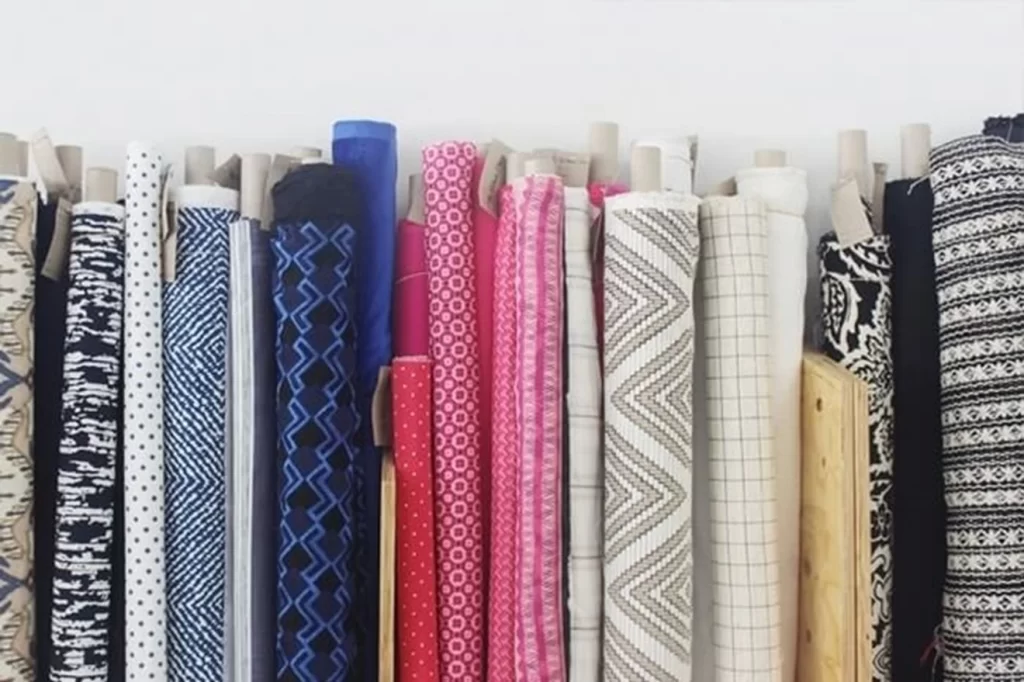
Direct-to-Garment (DTG) Printing
DTF printing is a rising star in the garment printing industry with a unique blend of versatility and efficiency. The process involves printing your design onto a special PET film using a dedicated DTF printer with DTF inks.
This method excels in full-color designs with photo-realistic details and works best on cotton fabrics. It offers a softer feel compared to screen printing and is perfect for creating personalized t-shirts, small business logos, or on-demand printing.
The ink sits on top of the fibers, resulting in a smooth, breathable print. Here’s a quick rundown of DTG’s pros and cons:
Pros
- Quick turnaround time
- Virtually mess free
- Perfect for small runs and on-demand printing
- High level of detail and color accuracy
- No setup costs or minimum order requirements
- Ideal for detailed prints that require multiple colors
- Use water-based (eco-friendly) inks
- Prints can withstand more than 60 washes
Cons
- Limited to CMYK color
- Limited to cotton and cotton-blend fabrics
- Longer production times compared to other methods
- Not as cost-effective for large orders
- Print may wash out over time
Direct-to-Film (DTF) Printing
DTF printing is a rising star in the garment printing industry with a unique blend of versatility and efficiency. The process involves printing your design onto a special PET film using modified inkjet printers with DTF inks.
Once printed, the design is dusted with hot melt powder, which acts as an adhesive. The film is then cured to melt the powder and set the design. Finally, the design is heat-pressed onto the garment, transferring it from the film to the fabric.
Pros
- Suitable for large and small production runs
- Offers vibrant, full-color prints with high detail and resolution
- Suitable for a wide range of fabrics, including cotton, polyester, and blends
- Can reproduce complex designs, gradients, and photographs accurately
- DTF prints are durable and can withstand multiple washes
Cons
- Requires specific DTF printers, inks, and films for optimal results
- Longer production times compared to traditional heat transfer methods
- Prints may not be as durable as other methods and fade or crack over time if not applied correctly
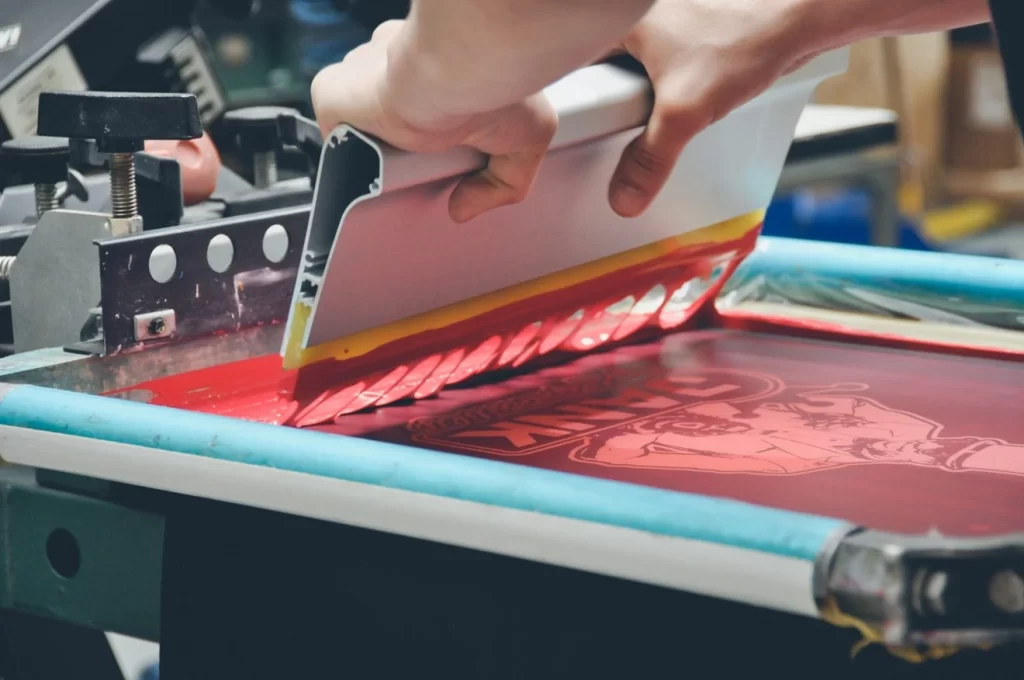
Heat Transfer Printing
Heat transfer printing also known as thermal printing is a beloved and fun technique to print on garments. The process involves transferring a design onto fabric using heat and pressure.
The design is first printed onto transfer paper or vinyl, which is then applied to the garment using a heat press machine. When ink melts on the garment, it creates smooth, durable, and water-resistant prints.
Heat transfer printing works best for cotton, polyester, and their blends. It is most suitable for custom T-shirts, sportswear, and jerseys.
If you’re a beginner in the shirt printing business, this printing technique is best for you for limited orders. It will save both your time and resources.
The heat transfer method differs from DTG printing as it requires no special inks or dyes; all you need is a heat press machine and transfer paper.
Pros
- Versatile and suitable for various fabrics
- Can produce intricate designs and photographic prints
- Minimal setup costs and ideal for small batches
- Works well for complex designs
Cons
- Prints may crack or peel over time, especially with frequent washing
- Limited durability compared to other methods
- Heat press equipment can be expensive
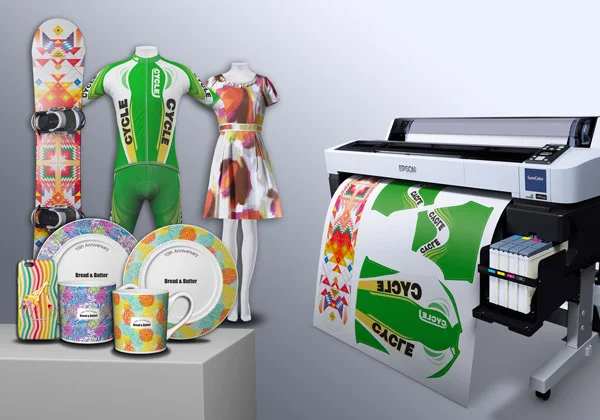
Dye Sublimation Printing
Among garment printing types, dye sublimation is the most eye-catching and easy to do for t-shirt printing. It takes a unique approach.
Here, the design is printed onto a special transfer paper and then heat-pressed onto the garment. The heat converts the dye from a solid to a gas, penetrating the fabric fibers, and creating a permanent, vibrant print.
Somehow this printing technique and DTF transfers are similar as both use heat to transfer the prints. However, there are some notable differences between DTF and sublimation.
This method is ideal for synthetic fabrics like polyester, resulting in lightweight, breathable prints that won’t crack or peel – perfect for activewear or performance apparel. Let’s explore its pros and cons:
Pros
- Good for bulk printing orders
- No additional cost to add a new color
- Produces vivid, full-color prints with no texture or feel
- Durable and long-lasting, even after repeated washings
- Ideal for all-over prints and designs with gradients or photographic elements
Cons
- Limited to polyester fabrics or polyester-coated items
- Requires special sublimation inks and equipment
- Not suitable for dark-colored garments
- Initial price could be higher than other method
Vinyl Cutting
Vinyl cutting, which is also known as vinyl plotter cutting, involves the cutting of designs or letters from a colored vinyl sheet using a vinyl cutter. The cut design is weeded to remove any extra vinyl, and then the heat is transferred onto the garment with the help of heat press machines.
First, the design is made on a computer and then the vinyl cutter cuts the sheet along the previously prepared path. This is a method that is often used to make stickers, decals and customize writing as well as other unique items applied on different kinds of surfaces.
Here’s a quick rundown of its pros and cons:
Pros
- Low setup cost
- Ideal for simple designs, text, and logos
- This garment printing type is suitable for several fabrics
- Offers a wide range of colors and finishes, including matte, glossy, and metallic
- Durable and long-lasting, with minimal fading or cracking
Cons
- Limited to solid colors and simple designs
- Not suitable for intricate or detailed artwork
- Each color requires a separate cutting and pressing process, making it time-consuming for multicolor designs
Embroidery
Embroidery is a traditional embroidering technique accomplished by sewing thread or yarn on garments with a needle and an embroidery machine.
Designs are generated as embroidery files, which are used to direct the machine’s movements in a way that creates complex patterns and textures. It’s a great way to make graphic t-shirts that last.
This print technique has been in use for years and has never failed to bring elegance, texture, and a touch of sophistication into various products such as clothing, accessories, home décor, and corporate branding.
Pros
- Adds a premium, textured look and feel to garments
- Durable and resistant to fading or peeling
- No dyes involved in printing, a more eco-friendly option
- Suitable for a wide range of fabrics, including denim, fleece, and hats
Cons
- Higher setup costs, especially for complex designs
- Limited color options compared to other printing methods
- Not suitable for large designs or all-over prints
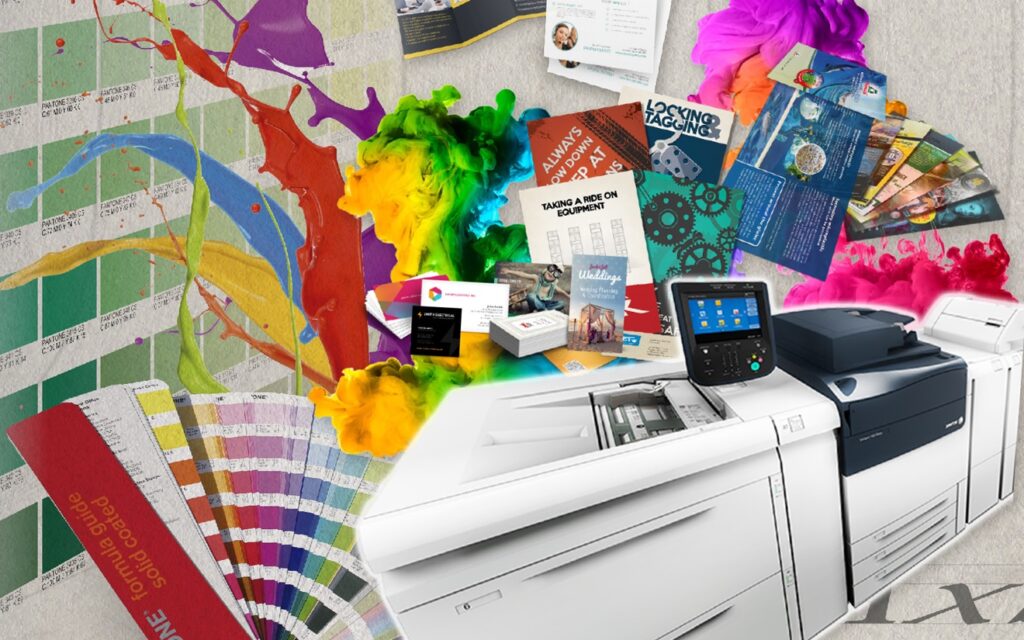
Discharge Printing
This eco-friendly method removes the existing dye from colored fabrics, creating a lighter area for your design. A discharge ink is applied to the garment, which reacts with the dye in the fabric to remove or bleach the color. The desired design is then revealed in the natural color of the fabric.
It works best on natural fabrics like cotton, resulting in a soft, breathable print that blends seamlessly with the garment. The dark-colored, black, and grey colored- fabrics are best for discharge printing.
Do not try it on polyester because the design will just bleed and leave nothing but a large mess on the shirt. Here’s a breakdown of its pros and cons:
Pros
- Creates soft, breathable prints with a vintage or distressed look
- Work best on dark-colored fabrics without the need for additional layers of ink
- Ideal for achieving a subtle, tone-on-tone effect
- Turn the shirt into a vintage style
- Prints are resistant to fading, cracking, and peeling
Cons
- Limited to certain types of fabrics, primarily cotton and cotton blends
- Requires careful control of the discharge process to prevent over-bleaching or color inconsistencies
- Not suitable for complex detailed designs
Foil Printing
Foil printing, also known as foil stamping or foil heat transfer, involves applying a metallic or colored foil to the garment’s surface using heat and pressure. A special adhesive is first applied to the fabric, and then the foil is pressed onto the adhesive.
It creates a shiny, eye-catching design that’s perfect for logos, lettering, or special occasion wear. Notably, foil printing offers a wide variety of colors and finishes.
While gold and silver foils remain popular choices, a variety of other colors and effects, such as holographic and iridescent, broaden the options and replicate the attraction of precious metals.
This dynamic range of options is what sets apart foil printing, allowing artists and designers to create unique and spectacular works that captivate the senses. Here’s a quick breakdown of its pros and cons:
Pros
- Prints are highly durable and resistant to fading
- Adds a luxurious and eye-catching metallic finish to designs
- Available in a variety of colors and finishes, including gold, silver, and holographic
- Can be combined with other printing methods for unique effects
Cons
- Limited to simple designs and solid areas of color
- May not appear vibrant designs with intricate details on dark-colored fabric
- Requires specific foil adhesive and heat press equipment
- Not suitable for all fabrics and may not adhere well to textured or stretchy materials
Digital Printing
Digital printing is one of the modern garment printing types. It involves printing designs onto transfer paper using a digital printer and then transferring the design onto the garment using a heat press. Unlike traditional heat transfer printing, this printing technique allows for full-color, photo-quality prints with precise detail.
Now, fashion designers can create knotty, full-color designs directly onto the garment with more precision and detail. They can opt for it as a versatile choice for custom clothing and accessories. Some of the advantages and disadvantages of digital printing are the following:
Pros
- Suitable for different fabrics, like cotton, polyester, and blends
- Can reproduce intricate designs, gradients, and photographs accurately
- High color vibrancy with a quick turnaround time
- No setup costs or minimum order requirements, making it ideal for small runs and custom designs
Cons
- Cost per unit can be more pricy than other printing methods
- Prints may not be as durable as other methods and can fade or crack over time
- Requires specific transfer paper and ink formulations for optimal results
Water-Based Printing
Water-based printing is an eco-friendly and sustainable option among all garment printing types. It offers a softer feel and better breathability on the garment. This method works well for printing on light-colored fabrics like cotton and blends. It provides a slightly muted color compared to plastisol inks.
This printing technique has emerged in trending garment printing types in the fashion industry for premium designs across a spectrum of textiles.
However, achieving vibrant colors on dark fabrics can be challenging. Here’s a breakdown of its pros and cons:
Pros
- Eco-friendly, soft, and breathable prints
- Water-based inks make it a sustainable option
- Suitable for light and dark-colored fabrics
Cons
- Limited wash fastness compared to other printing methods
- Water-based may not bond well with the fabric
- Equipment for this technique may be more expensive
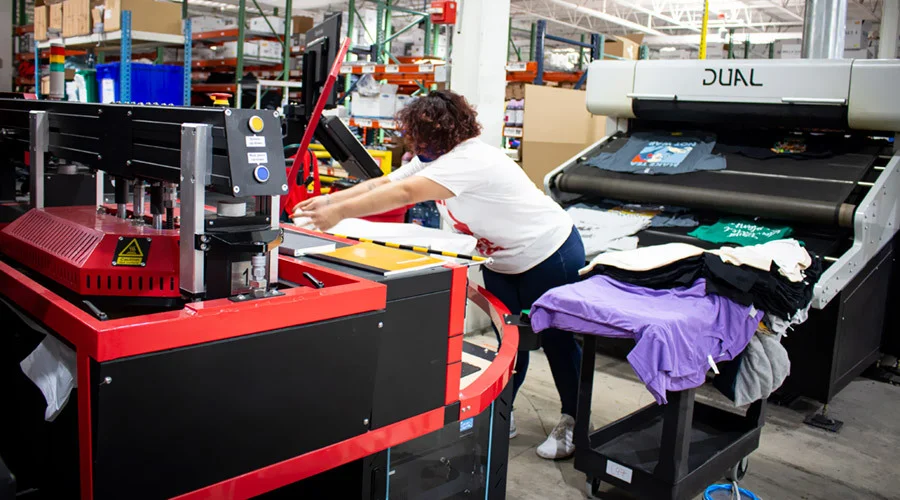
Which Garment Printing Type is Best for You?
When selecting which garment printing is best for you, several factors come into action. It all comes down to your order’s quantity, investing in a DTG printer, the type of fabric you’re printing on, and your budget.
Theprinterexpert.com is here for you to handle your printing business, guiding you through this journey with helpful guides and tips.
Here is a quick comparison between different garment printing types to help you make an informed decision:
| Garment Printing Type | Quality | Design Options | Print Area | Durability | Time | Volume | Cost |
|---|---|---|---|---|---|---|---|
| Screen Printing | High | Detailed | Versatile | Durable | Longer | High | Medium |
| DTG Printing | High | Full-color | Detailed | Medium | Quick | Low | Medium |
| DTF Printing | High | Full-color | Versatile | High | Quick | Low | High |
| Heat Transfer Printing | Good | Multicolor | Versatile | Medium | Quick | Medium | Low |
| Dye Sublimation Printing | Vibrant | Full-color | Full-color | Medium | Quick | High | Medium |
| Vinyl Cutting | Good | Limited colors | Limited | Durable | Quick | Low | Low |
| Embroidery | High | Textured | Limited | Durable | Longer | Low | High |
| Discharge Printing | Intricate | Limited Colors | Detailed | Durable | Quick | Low | Medium |
| Foil Printing | Luxurious | Metallic Shine | Limited | Durable | Longer | Low | Medium |
| Digital Printing | Good | Full-color | Detailed | Medium | Quick | Low | High |
| Water-based Printing | Soft | Vibrant Colors | Detailed | Durable | Quick | Medium | Medium |
Each garment printing type brings its own benefits to the table. From traditional methods like screen printing to the invention of DTF transfers, the key lies in investing in a reliable printer.
The choice of printing methods also depends on your preference, production speed, and cost. Whether you want detailed details, brilliant colors, or a touch of luxury, there’s a technique to fit your vision.
Conclusion
Garment printing enables you to enhance the plain outfits into creative paintings. By knowing the various processes of garment printing types and their respective pros and cons, you can pick the most suitable type for your printing project.
That said, let your imagination fly high, experiment with the numerous printing options, and get prepared to be yourself!
